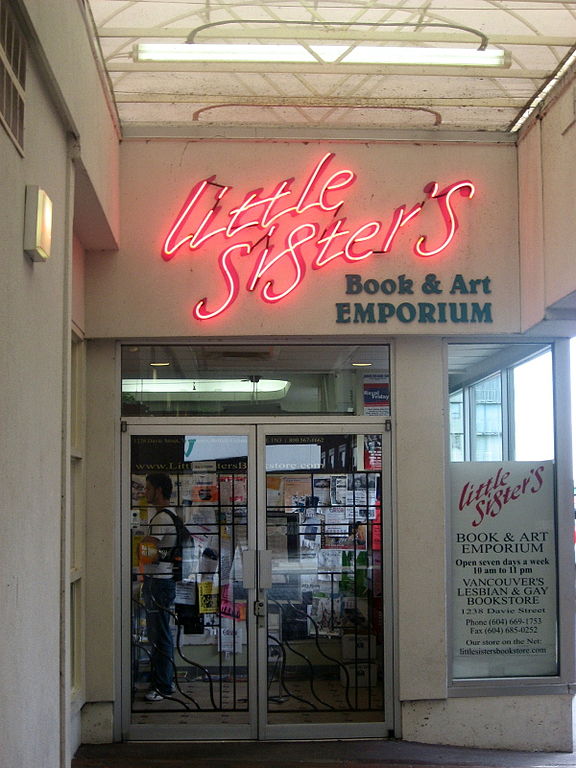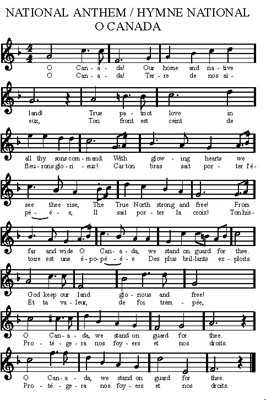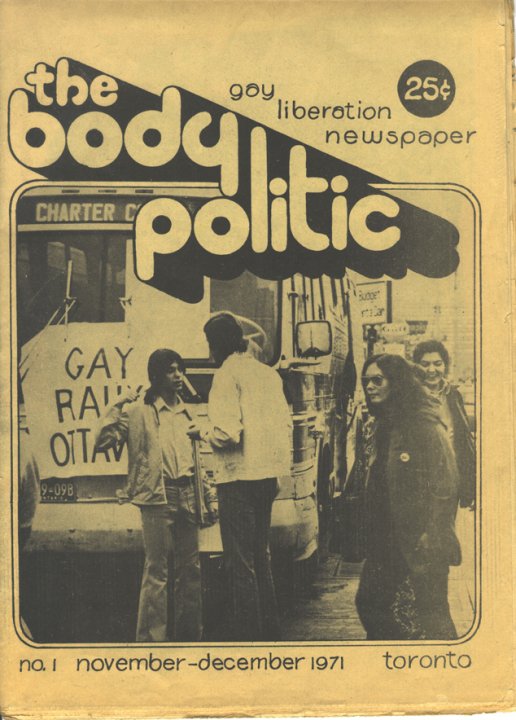Browse "Culture"
-
Article
Inuit Words for Snow and Ice
It is often said that the Inuit have dozens of words to refer to snow and ice. Ontarian anthropologist John Steckley (in White Lies about the Inuit, 2008) noted that according to popular belief, in Inuktitut, the language of the Inuit from Canada's Eastern Arctic, the number of words for "snow" generally contains the digit 2, and that the total most often cited is 52 different terms.
"https://d2ttikhf7xbzbs.cloudfront.net/media/media/564ff157-335a-409a-81af-13f050b3079a.jpg" // resources/views/front/categories/view.blade.php
https://d2ttikhf7xbzbs.cloudfront.net/media/media/564ff157-335a-409a-81af-13f050b3079a.jpg
-
Article
Inuksuk (Inukshuk)
Inuksuk (also spelled inukshuk, plural inuksuit) is a figure made of piled stones or boulders constructed to communicate with humans throughout the Arctic. Traditionally constructed by the Inuit, inuksuit are integral to Inuit culture and are often intertwined with representations of Canada and the North. A red inuksuk is found on the flag of Nunavut. In Inuktitut, the term inuksuk means "to act in the capacity of a human." It is an extension of the word inuk meaning "a human being." Inuksuit have been found close to archaeological sites dating from 2400 to 1800 BCE in the Mingo Lake region of southwest Baffin Island. (See also Prehistory.) While stone figures resembling human forms are often referred to as inuksuk, such figures are actually known as inunnguaq.
"https://d2ttikhf7xbzbs.cloudfront.net/media/media/fda0c3a3-c613-4196-ba0a-690925ca6c04.jpg" // resources/views/front/categories/view.blade.php
https://d2ttikhf7xbzbs.cloudfront.net/media/media/fda0c3a3-c613-4196-ba0a-690925ca6c04.jpg
-
Article
Joual
Joual is the name given, in specific sociological and socio-historical situations, to the variety of French spoken in Québec.
"https://d2ttikhf7xbzbs.cloudfront.net/media/media/e535a1f6-a1dc-4d47-b4ff-63970250900d.JPG" // resources/views/front/categories/view.blade.php
https://d2ttikhf7xbzbs.cloudfront.net/media/media/e535a1f6-a1dc-4d47-b4ff-63970250900d.JPG -
Article
King of Kensington
King of Kensington was a CBC sitcom that ran for 111 episodes from 1975 to 1980. Actor Al Waxman played Larry King, the titular “king” of Toronto’s vibrant and multicultural Kensington Market neighbourhood. Created by Perry Rosemond, the series was a major success both in Canada and internationally. It regularly drew close to 2 million weekly viewers. Toronto Star TV critic Antonia Zerbisias called it “the single most important entertainment series ever produced in English-speaking Canada” because it represented the best of Canada to Canadian and international audiences.
"https://d2ttikhf7xbzbs.cloudfront.net/media/media/c3d5a936-ff2d-4ae9-93c3-313d4db0387e.jpg" // resources/views/front/categories/view.blade.php
https://d2ttikhf7xbzbs.cloudfront.net/media/media/c3d5a936-ff2d-4ae9-93c3-313d4db0387e.jpg
-
Article
Language
Language is a form of communication. More specifically, language is a communication system based on human sounds. There are, however, other forms of communication systems based on touch, scent, movement, colour, gesture and even the electrical impulses that pass through computers.
"https://d2ttikhf7xbzbs.cloudfront.net/media/new_article_images/LanguageLangue/Language_Langue.jpg" // resources/views/front/categories/view.blade.php
https://d2ttikhf7xbzbs.cloudfront.net/media/new_article_images/LanguageLangue/Language_Langue.jpg
-
Article
Little Sister’s Book and Art Emporium
Little Sister’s Book and Art Emporium has long served as a source of 2SLGBTQ+ literature in Vancouver. Founded by Bruce Smyth and his partner Jim Deva in 1983, the bookstore has also been a social and political focal point for the communities it serves. As Deva has asserted, “More than anything else, Little Sister’s represents the power of community.” This power drove Little Sister’s decades-long legal battle with Canada Customs over censorship and the seizure of imported gay literature.
"https://d2ttikhf7xbzbs.cloudfront.net/media/media/576px-Little_Sister_s_Book_and_Art_Emporium.jpg" // resources/views/front/categories/view.blade.php
https://d2ttikhf7xbzbs.cloudfront.net/media/media/576px-Little_Sister_s_Book_and_Art_Emporium.jpg
-
Article
Media Convergence in Canada (Plain-Language Summary)
Media convergence is a term for two things: 1) It is when different media merge through technology. This is also known as technological convergence. 2) It is also when companies own different media outlets as part of a business strategy. This is also called media consolidation, media concentration or economic convergence.
"https://d2ttikhf7xbzbs.cloudfront.net/media/new_article_images/MediaConvergence/5473206942_6900ac8142_z.jpg" // resources/views/front/categories/view.blade.php
https://d2ttikhf7xbzbs.cloudfront.net/media/new_article_images/MediaConvergence/5473206942_6900ac8142_z.jpg
-
Article
'Mimkwamlis Potlatch (Memkumlis Raid)
On 25 December 1921, a Potlatch ceremony was held in the Kwakwa̱ka̱’wakw village of ‘Mimkwamlis (also spelled Memkumlis, and also known as Village Island). The Potlatch ceremony was illegal at the time. Officers of the federal government’s Department of Indian Affairs (see Federal Departments of Indigenous and Northern Affairs), as well as the Royal Canadian Mounted Police and, according to some sources, the British Columbia provincial police learned of this Potlatch. They arrested 45 people for participating in the Potlatch. Approximately half of the people were sent to prison for periods ranging from two to three months. Hundreds of precious Kwakwa̱ka̱’wakw ceremonial objects were confiscated. Some of these items were sold to collectors and wound up in museums without the consent of the Kwakwa̱ka̱’wakw people. The arrests related to the ‘Mimkwamlis Potlatch of 1921 were an example of police and government abuse of Indigenous Peoples. It is a further example of the attempted cultural genocide of Indigenous Peoples in Canada (see Genocide and Indigenous Peoples in Canada).
"https://d2ttikhf7xbzbs.cloudfront.net/MimkwamlisPotlatch/umista_cultural_centre_web.jpg" // resources/views/front/categories/view.blade.php
https://d2ttikhf7xbzbs.cloudfront.net/MimkwamlisPotlatch/umista_cultural_centre_web.jpg
-
Article
Moccasin
Moccasins are a type of footwear often made of animal hide and traditionally made and worn by various Indigenous peoples in Canada. During the fur trade, Europeans adopted these heelless, comfortable walking shoes to keep their feet warm and dry. Moccasins continue to serve as practical outerwear, as well as pieces of fine Indigenous handiwork and artistry.
"https://d2ttikhf7xbzbs.cloudfront.net/media/media/2041d144-2d6c-4775-af9a-796e6e662645.jpg" // resources/views/front/categories/view.blade.php
https://d2ttikhf7xbzbs.cloudfront.net/media/media/2041d144-2d6c-4775-af9a-796e6e662645.jpg
-
Article
"Mon Pays"
Originally composed as a theme song for a film, Gilles Vigneault’s “Mon pays” expresses nationalism, solidarity and connection to the northern landscape, and was adopted as a Québécois anthem.
"https://d2ttikhf7xbzbs.cloudfront.net/media/media/af9e2a63-4657-4c20-a0e7-c72d675829cf.jpg" // resources/views/front/categories/view.blade.php
https://d2ttikhf7xbzbs.cloudfront.net/media/media/af9e2a63-4657-4c20-a0e7-c72d675829cf.jpg
-
Article
Acadian Music
Music and song have always been an important part of Acadian culture. Music education has existed in Acadia since the 1860s. School and college choirs have enjoyed great success, and classically trained Acadian musicians have distinguished themselves on the world stage.
"https://d2ttikhf7xbzbs.cloudfront.net/media/media/051052d9-c140-4d7a-9768-aa1d64cedeb3.jpg" // resources/views/front/categories/view.blade.php
https://d2ttikhf7xbzbs.cloudfront.net/media/media/051052d9-c140-4d7a-9768-aa1d64cedeb3.jpg
-
Article
“O Canada”
“O Canada” is Canada’s national anthem. Originally called “Chant national,” it was written in Québec City by Sir Adolphe-Basile Routhier (words in French) and composer Calixa Lavallée (music), and first performed there on 24 June 1880. It began to be sung widely in French Canada at that time and later spread across Canada in various English-language versions, of which the best-known was written by Robert Stanley Weir in 1908. The lyrics of this version were amended several times over the years, with the most recent changes occurring in February 2018; the French lyrics have been shortened but otherwise remain unaltered from the original. “O Canada” was approved as Canada’s national anthem by a Special Joint Committee of the Senate and House of Commons on 15 March 1967. It was officially adopted as Canada’s national anthem under the National Anthem Act on 27 June 1980. The Act was proclaimed by Governor General Edward Schreyer in a public ceremony on Parliament Hill on 1 July 1980.
"https://d2ttikhf7xbzbs.cloudfront.net/media/media/b82d1c6f-e0dd-4fbe-ba40-5e1b7e2b35dd.jpg" // resources/views/front/categories/view.blade.php
https://d2ttikhf7xbzbs.cloudfront.net/media/media/b82d1c6f-e0dd-4fbe-ba40-5e1b7e2b35dd.jpg
-
Article
Oral History
Oral history is an account of the past transmitted by word of mouth. It has made important contributions to the ways in which we understand and interpret the past. Today, oral history has become an important field of study. Oral histories are also central to Indigenous cultures, both historical and contemporary. (See also Historical Sources and Indigenous Oral Histories and Primary Sources.)
"https://d2ttikhf7xbzbs.cloudfront.net/media/media/bcd6dc2a-0573-46da-a636-1d407d0ded29.jpg" // resources/views/front/categories/view.blade.php
https://d2ttikhf7xbzbs.cloudfront.net/media/media/bcd6dc2a-0573-46da-a636-1d407d0ded29.jpg
-
Article
Pink Triangle Press
In 1975, the informal collective that had founded Canada’s leading gay liberation newspaper, the Body Politic, in 1971 incorporated as Pink Triangle Press (PTP). Now one of the oldest producers of queer media content in the world, Pink Triangle Press is responsible for Xtra Magazine, the travel guide Pink Ticket Travel, multiple dating services and the 2021 documentary Small Town Pride.
"https://d2ttikhf7xbzbs.cloudfront.net/media/media/9983096905_bc6352ed8c_o.jpg" // resources/views/front/categories/view.blade.php
https://d2ttikhf7xbzbs.cloudfront.net/media/media/9983096905_bc6352ed8c_o.jpg
-
Article
Pit House
A pit house is a type of dwelling historically used by various Indigenous peoples living in the Plateau region of Canada. Partially built into the ground, pit houses provided warmth and shelter during the winter season. While pit houses no longer serve as common dwellings, they retain cultural significance for many Indigenous peoples. Archeological remains and replicas of pit houses can be found in various parts of Canada. (See also Architectural History of Indigenous Peoples in Canada.)
"https://d2ttikhf7xbzbs.cloudfront.net/media/media/f78eb160-4435-47f0-b8d4-d0694aa6ac55.jpg" // resources/views/front/categories/view.blade.php
https://d2ttikhf7xbzbs.cloudfront.net/media/media/f78eb160-4435-47f0-b8d4-d0694aa6ac55.jpg

